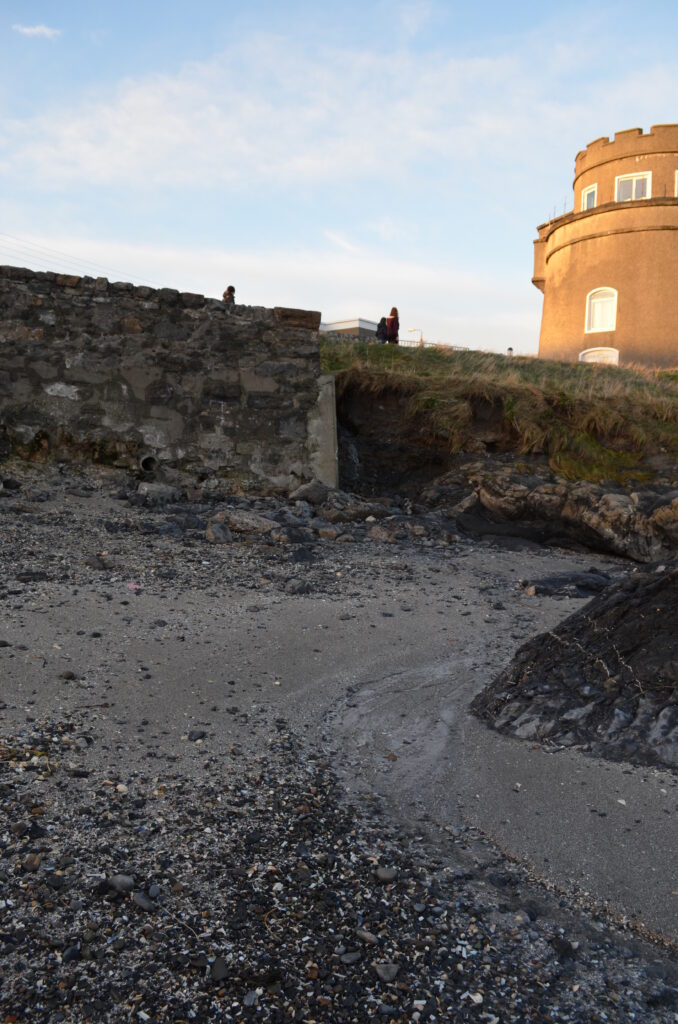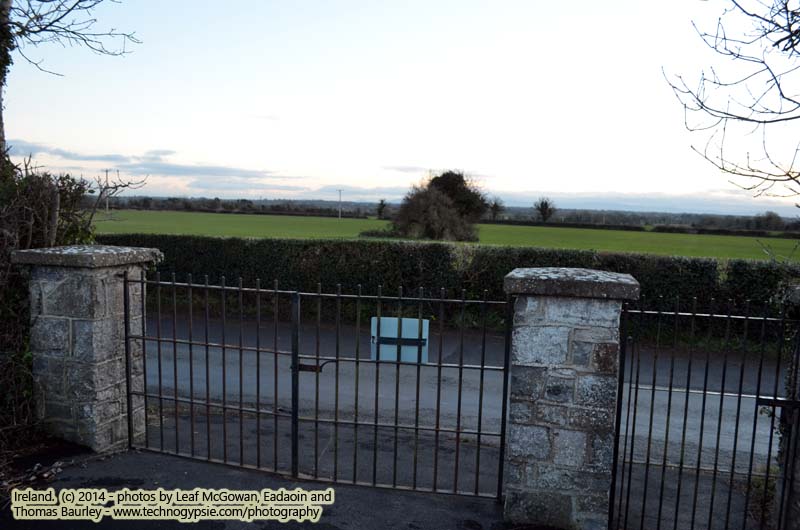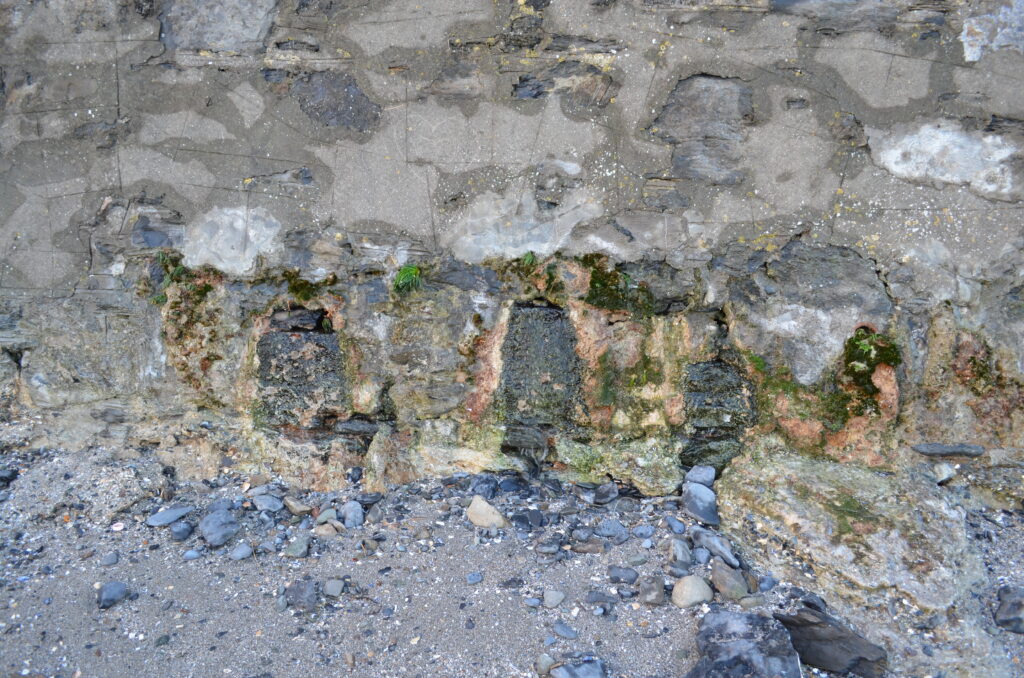
Portmarnock Spring / St. Marnock’s Spring
Portmarnock Beach, Portmarnock, Ireland
http://www.portmarnockwaves.com/St.%20Marnock’s_Well.html
https://portmarnock.wordpress.com/old/ Portmarnock
There are most likely two different holy wells/springs dedicated to St. Marnock in Portmarnock. It was very difficult finding either – the Dublin Well book referred to one below the lighthouse which is pictured here and the other is referred to as being within the graveyard. The well itself was first mentioned by J. Shearman in 1868 and thoroughly discussed by Macalister in 1945. These two springs are described quite differently. When referring to the Spring, the location is the beach, when referring to the well, the location is the graveyard. The reputation of the well is described primarily by it being located next to a magnificent Ogham stone with a key-hole opening in the sinister side of a drawing by Reverend J. Shearman of the stone and well labeled “St. Marnock’s fingers” and references to the old cemetery.
Macalister wrote that the “stone’s existence has been known since about the middle of the last century. The only record of it is a very rough sketch by Rev. J. Shearman … in a note upon the sketch are the words in Shearman’s Handwriting – Fragments of an Ogham stone, formerly standing beside St. Marnock’s well, near Malahide, Co. Dublin dated June 8th, 1868 … the stone was broken up sometime after the above date and the fragments dispersed apparently for building material” (Geology: Macalister/1945 20-21). During a Fingal County Council meeting restoration of St. Marnock’s Cemetery and Well was proposed by Councilor P. Coyle and D. O’Brien that the old St. Marnock’s Cemetery adjacent to Strand Road in Portmarnock and the well be examined by an archaeologist who will recommend restoration/maintenance needs under the Heritage/Conservation Programme.
The site was visited in March 2006 during the banking of sand on the golf course close to the cemetery walls as well as assessing the current state of St. Marnock’s well, with the end result that the Conservation Research Officer was unable to determine the exact location of St. Marnock’s Well with no visibility found above ground leading to an inability to assess the current state. The rumor was that a local landowner destroyed the well in the middle of the 19th century since the graveyard was under private ownership even though the graveyard and well are both Protected Structures and Recorded Monuments. The historic description of the well indicates a large circular pool with sixteen steps leading down to it with an old willow tree bent over it. The known directions of the well are heading in the direction of Portmarnock village, just after the Portmarnock Hotel, just past the Artworks Café, to the next bus stop, on the left-hand side of the wall is a gate into a field with a footpath leading directly to the old graveyard.
The well is supposed to be near the church where locals would visit and celebrate “Patron’s Day” every August and make rounds of the well. Pilgrimages stopped when the property owner Mr. Jameson diverted the water to the cattle pond and filled the Holy Well. The Druid Well/Spring – References to the Well and Spring, with the different locations being attributed and used by local Druids for healing. It is believed that St. Patrick influenced missionary St. Marnock to take over these wells/springs claiming them for his own fame and trying to demolish the Pagan traditions/beliefs behind them as is the case with many of the holy wells and springs throughout the world covered over by Christianity.
Apparently, St. Marnock was well known in Scotland being from Kilmarnock in having converted the local Celts from worshipping water, trees, and wells to Christianity. He apparently did blessings over the Druid Well converting it to a “Holy Well”. There is ample evidence of use in this area dating back to Neolithic times including the discovery of flints and other tools excavated nearby and the remains of a ring fort can be seen from aerial photography south of town.

While searching for the well we stumbled upon this Fingal County burial ground that may or may not be the homeplace to the graveyard well. Across the street from the graveyard is a fairy tree underneath that looks like it could be a Spring. The field was too boggy and mucky to investigate.



















Discover more from The Naiads Well
Subscribe to get the latest posts sent to your email.
